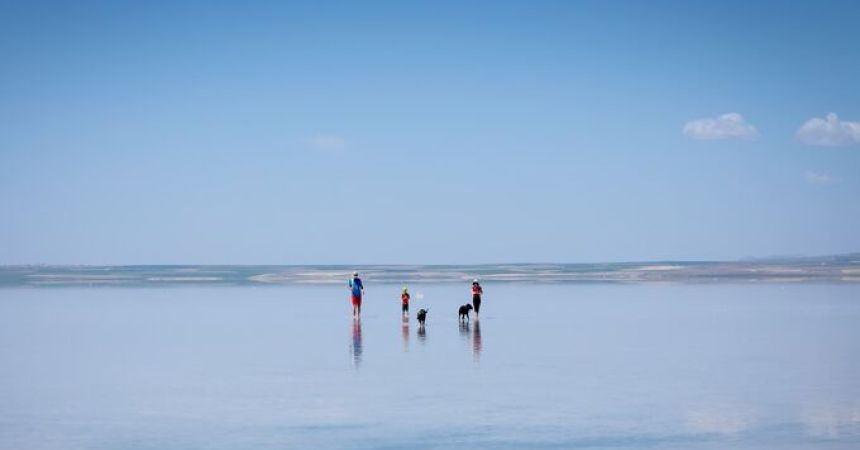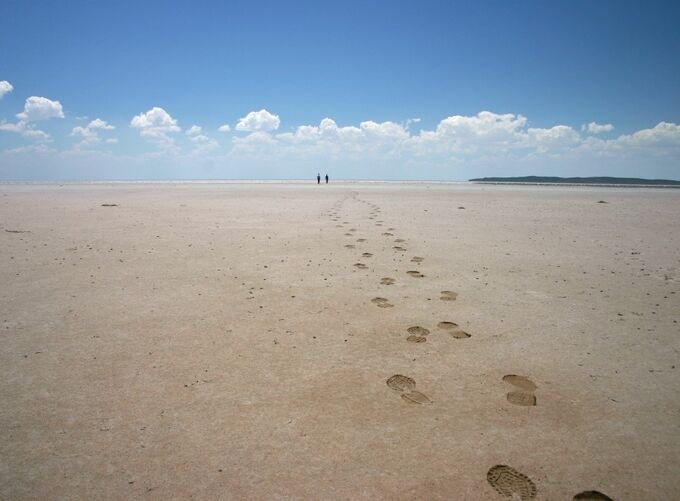
Turkey's Salt Lake Wonders: Nature, Beauty & Travel Tips
Introduction Salt Lake in Turkey
Nestled in the heart of Turkey’s Anatolian region lies a mesmerizing natural wonder—Salt Lake, or Tuz Gölü in Turkish. This vast saline lake, one of the largest in the country, captivates visitors with its stark beauty and unique ecological attributes. Stretching across an impressive 1,665 square kilometers, Salt Lake offers an array of experiences from stunning landscapes to fascinating wildlife and rich cultural history. In this blog, we will embark on an in-depth exploration of Salt Lake, unveiling its secrets and guiding you on how to make the most of your visit.
Geographical Significance
Salt Lake is located approximately 150 kilometers southeast of Ankara, Turkey’s capital. Situated in the Central Anatolian Plateau, the lake’s expansive, flat basin is a striking contrast to the surrounding mountainous terrain. Its location within a semi-arid climate zone contributes to its extreme salinity, making it a significant feature in Turkey’s geographical landscape. Salt Lake and Cappadocia Tour
The lake’s saline nature is a result of the high evaporation rates typical of the region. During the summer months, the water levels drop significantly, leaving behind a vast expanse of salt flats that shimmer under the sun. This transformation creates a dramatic and otherworldly scene that draws photographers, nature enthusiasts, and travelers alike.
Ecological Importance of Tuz Golu
Salt Lake is not just a visual marvel; it plays a crucial role in the region’s ecology. The lake and its surrounding areas are part of an important wetland ecosystem that supports a diverse range of flora and fauna. Despite the harsh conditions, several species have adapted to thrive in this saline environment.
Bird Watching in Salt Lake
One of the lake’s most notable features is its significance as a bird habitat. Tuz Gölü is a critical stopover point for migratory birds traveling along the Eurasian flyway. During migration periods, particularly in spring and autumn, the lake becomes a temporary haven for a variety of bird species, including flamingos, herons, and sandpipers. The flamingos, with their striking pink plumage, are a major attraction and offer a spectacular sight against the lake’s white salt crust.
Flora and Fauna
The lake’s saline conditions have led to the development of specialized flora and fauna. Halophyte plants, which are adapted to high salt concentrations, thrive in the area. These include species such as saltbush and saltwort, which are well-suited to the saline soil. The lake’s unique conditions also support a range of small invertebrates and fish that have adapted to survive in its harsh environment.
Historical and Cultural Significance
Salt Lake holds a special place in Turkish culture and history. The lake has been a vital resource for the region for centuries, particularly due to its extensive salt deposits. Historically, salt was a valuable commodity, and the extraction process contributed significantly to the local economy.
Salt Production
The tradition of salt production at Tuz Gölü dates back to ancient times. Today, salt harvesting remains an important industry, with local communities continuing to collect salt using traditional methods. The sight of salt pans being worked by hand, along with the mounds of salt being harvested, offers a glimpse into the historical significance of this resource.
Cultural Heritage
In addition to its economic importance, Salt Lake has also been woven into the cultural fabric of the region. The lake’s stark beauty and its role in local folklore and traditions make it a significant cultural landmark. Local festivals and events often highlight the lake’s importance, celebrating the traditions and history associated with salt production.

Activities and Attractions around Salt lake in Turkey
Visiting Salt Lake in Turkey provides a range of activities and attractions for nature lovers and cultural enthusiasts. Here are some top recommendations for making the most of your trip:
Photography Tour
The unique landscape of Salt Lake offers unparalleled opportunities for photography. The vast salt flats create a stunning contrast with the sky, especially during sunrise and sunset. The reflections on the wet salt crust and the shifting hues of the landscape make for captivating photos.
Bird Watching Tours
For bird enthusiasts, participating in a guided bird-watching tour can be a highlight of your visit. These tours often include expert guides who can provide insights into the various bird species and their migratory patterns. The sight of flamingos and other migratory birds against the lake’s backdrop is truly memorable.
Salt Harvesting Experience
If you’re interested in the local economy and traditions, consider taking part in a salt harvesting experience. Many local operators offer tours that allow visitors to see the traditional methods of salt extraction and learn about the history of salt production in the region.
Hiking and Exploration Trip
Exploring the areas surrounding the lake offers a chance to experience the diverse landscape of the Central Anatolian Plateau. Hiking trails provide opportunities to see the lake from different vantage points and to appreciate the natural beauty of the region.
Tips for Visitors Salt lake in Turkey
Best Time to Visit Salt Lake in Turkey
The best time to visit Salt Lake is during the spring (April to June) and autumn (September to October). During these periods, the weather is pleasant, and the lake’s unique features are most accessible. The summer months can be extremely hot, and the winter months may bring snow, which can obscure the lake’s landscape.
What to Bring
When visiting Salt Lake, it’s essential to be prepared for the harsh conditions. Wear comfortable, weather-appropriate clothing and sturdy walking shoes. Don’t forget to bring sunscreen, a hat, and plenty of water to stay hydrated.
Respect the Environment
As with any natural site, it’s important to respect the environment. Stick to designated paths to avoid damaging the delicate ecosystem, and be mindful of local wildlife. Avoid leaving any litter behind and follow any guidelines provided by local authorities or tour operators.
Exploring Salt Lake in Turkey
Salt Lake, with its otherworldly landscapes, rich ecological diversity, and cultural significance, is a true gem of Turkey’s natural heritage. Whether you’re captivated by the striking beauty of its salt flats, intrigued by its role in the local economy, or eager to witness the spectacle of migratory birds, Salt Lake offers a unique and enriching experience for every visitor. By exploring its diverse attractions and respecting its delicate environment, you can fully appreciate the wonders of this extraordinary destination.



